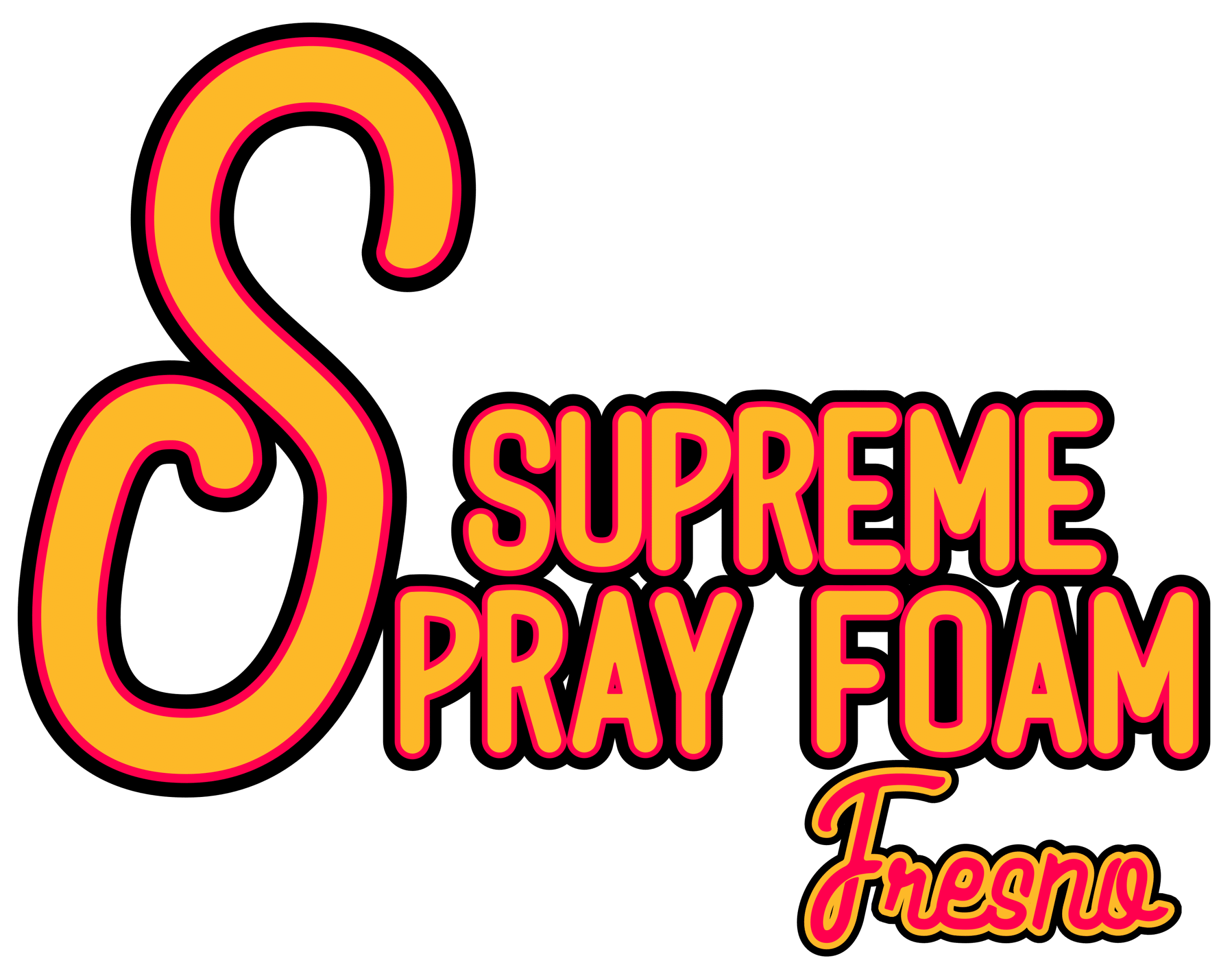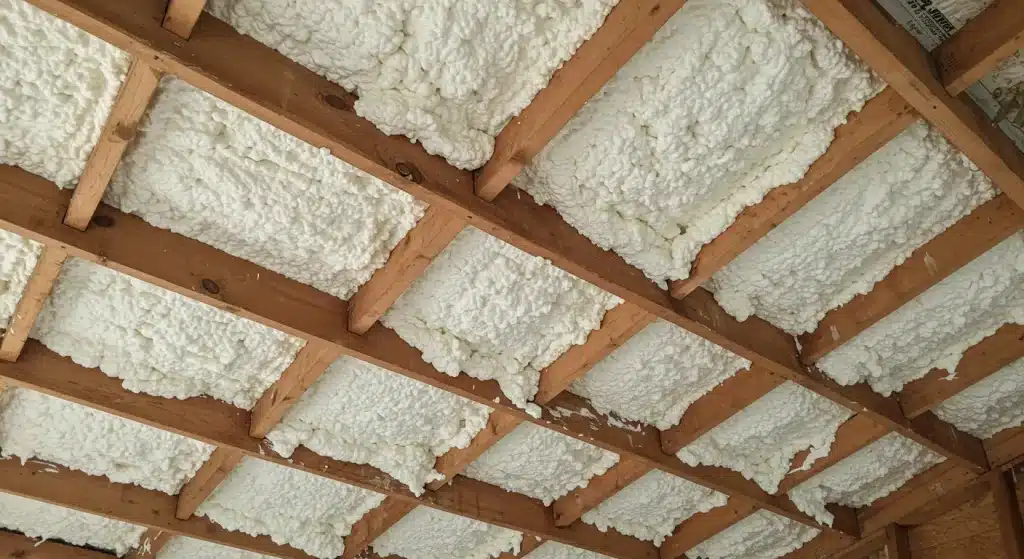Spray foam insulation is a powerful tool for improving energy efficiency but can it shrink? Yes, it can. While high-quality spray foam is known for its long-term durability, improper installation, moisture issues, or poor product quality can lead to shrinkage over time. At Supreme Spray Foam Fresno, we want homeowners to spot the early signs before it leads to costly repairs or energy loss.
In this guide, we’ll explain why spray foam insulation might shrink, how to identify symptoms early, and what to do if you suspect a problem. Whether you’re considering spray foam for the first time or you’re wondering if your current insulation needs attention, this article will give you the clarity you need to take action with confidence.
Why Spray Foam Insulation Shrinks
Most professionally installed spray foam should not shrink under normal conditions. However, a few key factors can trigger issues:
- Improper application temperatures
- Incorrect mixing ratios
- Inferior product quality
- Moisture exposure before curing
- Building movement or settling
When one or more of these variables go wrong, the foam can pull away from framing, lose its air seal, and create energy inefficiencies. Closed-cell spray foam is particularly dense, so shrinkage here can indicate serious underlying issues.
Even minor gaps can severely reduce your insulation’s effectiveness, causing your HVAC system to work harder and increasing your energy consumption.
In some cases, improper ventilation or hidden water leaks may cause recurring insulation damage, turning a minor problem into a much larger issue over time. That’s why routine inspections and follow-up maintenance play a crucial role in preventing long-term deterioration.
Early Signs Your Spray Foam Insulation Needs Repairs
Here are the most common signs that your insulation may be shrinking or failing:
1. Unexplained Drafts or Temperature Swings
If certain rooms are suddenly harder to heat or cool, insulation gaps may be to blame.
2. Increased Energy Bills
Rising utility costs can signal a compromised air barrier, reducing your home’s efficiency. If your monthly energy bills have crept up without an obvious reason, it could be time to inspect your insulation.
3. Visible Gaps in Foam
Check attics, crawl spaces, or basements. If the foam appears to pull back from surfaces, it may be shrinking. Pay special attention to corners and junctions, where shrinkage is most likely to occur first.
4. Moisture or Mold Problems
Shrinking insulation can let moisture in, leading to condensation, mold growth, or even rot. Mold spores can significantly affect indoor air quality, posing risks to respiratory health.
5. Pest Infestations
Tiny gaps created by shrinking foam can become entry points for rodents or insects. If you notice signs of pests, inspect your insulation closely.
Bonus Tip: Use a thermal camera or schedule an energy audit to confirm heat loss spots that aren’t visible to the eye.
Comparing Spray Foam to Other Insulation Types
| Insulation Type | Shrinkage Risk | R-Value per Inch | Air Seal Capability | Lifespan |
| Closed-Cell Spray Foam | Low (when installed correctly) | 6.5–7.0 | Excellent | 30+ years |
| Open-Cell Spray Foam | Moderate | 3.5–3.7 | Very Good | 20–30 years |
| Fiberglass Batt | None (but poor air seal) | 2.2–3.8 | Poor | 10–25 years |
| Cellulose | None | 3.2–3.8 | Moderate | 20–30 years |
When weighing your options, remember that while fiberglass and cellulose don’t shrink, they also don’t create the same level of air seal as spray foam.
What Affects Foam Stability
| Factor | Ideal Condition | Risk When Not Met |
| Application Temperature | 70°F–85°F | Poor adhesion, shrinkage |
| Curing Time | 24–72 hours | Foam doesn’t fully expand |
| Substrate Moisture | Dry, clean surfaces | Cell separation, shrinkage |
| Mix Ratio (A:B) | Manufacturer-specified balance | Weak structure, off-gassing |
Getting the installation right the first time is crucial. The smallest miscalculation whether in chemical ratios, substrate conditions, or environmental temperature can compromise the entire application.
Bonus Tip: Always ask your installer about temperature controls and mix calibration. Ensure they’re following the manufacturer’s specific installation guidelines.
Things to Know Before Getting Spray Foam Inspected or Repaired
Before you schedule a repair or assessment:
- Ventilation matters: Ensure your attic and crawl spaces are ventilated to prevent trapped moisture.
- Check for rebates: Local energy programs may offer incentives for insulation upgrades.
- Contractor credentials: Only work with licensed, certified professionals familiar with climate-specific best practices in Fresno.
- Check attic ventilation: Inadequate ventilation can lead to condensation issues that impact insulation performance.
- Timing repairs: Addressing small gaps early costs less than redoing full sections later.
Trending Discussions Around Spray Foam Longevity
Homeowners are increasingly concerned with:
- Longevity vs. upfront cost: Is spray foam worth it long-term? (Yes when installed properly.)
- Environmental impact: Is shrinking foam releasing VOCs? (Most modern foams are low-VOC, but check with your installer.)
- Best fix repair or reapply: (Localized repairs are often possible, but large shrinkage may require reapplication.)
At Supreme Spray Foam – Fresno, we stay up to date with material innovations and safety standards to ensure the best outcome for our clients.
Ready to Achieve Energy Efficiency Without Compromise?
If you suspect your spray foam insulation is shrinking or you’re planning a new install take action today. Getting ahead of insulation issues can save you thousands on energy bills and repairs.
Schedule your inspection with Supreme Spray Foam Fresno. We’ll assess your insulation’s condition and offer solutions that last. Phone: (559) 545-0800 or Email: [email protected]
Your Insulation Questions Answered by Supreme Spray Foam Fresno
Is spray foam shrinkage covered under warranty?
It depends on the installer and product. Most professional-grade foam comes with a warranty if applied correctly check your paperwork or contact us.
Can I add more spray foam to fix shrinking areas?
In many cases, yes. Spot repairs are possible if the structure is sound and the damage is localized. We’ll assess your situation and recommend the best course.
How do I confirm if my insulation is shrinking?
Look for physical gaps, unusual temperature changes, or call us for a thermal imaging scan.
Is open-cell or closed-cell foam more likely to shrink?
Open-cell is more flexible but may deform over time. Closed-cell is more rigid, but installation errors can lead to shrinkage.
Will shrinkage affect my indoor air quality?
Yes gaps can allow moisture and allergens into your home. Sealing these is crucial for comfort and health.
How often should I inspect my spray foam insulation?
We recommend visual inspections every 2–3 years, and professional evaluations every 5 years or after major weather events.


